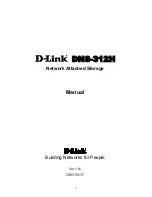
Platinum™ IP3
Installation and Operation Manual
Frame Synchronizer and Demultiplexing Input Modules (PT-FSDMX-IBG/PT-FSDMXO-IBG, PT-FSDX8C1D-IBG, PT-FSDMX8O1D-IBG)
© 2016 Imagine Communications Corp.
Proprietary and Confidential.
September 2016 | Page 156
Name
Description
Type
Options
Frame Sync / Demux Mode
Sets the operational mode of
the frame sync, delay or sync.
Available with the optional
Frame Sync license.
RW
FS: Sync Mode
FS: Delay Mode
Demux
Bypass
Frame Sync / Demux Status
Indicates whether the frame
sync is locked, and what it is
locked to
RO
Force Freeze
Enables video freeze
RW
No
Yes
Force Freeze Mode
Specifies the type of freeze,
field 1, field 2 or frame
RW
Field 1
Field 2
Frame
Loss of Video Mode
Selects the output video
mode when the input video is
disrupted
RW
Pass
Freeze
Black
Fast Switch
Enable fast switching
RW
No
Yes
Notes
ADS Clean
In all modes of operation (Framesync/Delay/Demux-only mode), ADS Clean set to Yes wipes out all
HANC data with the exception of EDH (SD only).
When a channel is operated in Framesync mode or if a board without a Framesync license (Demux-only)
has the ingested SDI signal already locked to the reference signal applied to the board, the Audio
Embedder re-populates the HANC space with Audio data coming from the Audio processor. In order for
the Audio Embedder to re-populate empty HANC space, the group embedding mode has to be set to
either ‘Auto’ or ‘Append’. Overwrite only applies if there is ’something’ to overwrite.
When operating a channel in Framesync mode, use ADS Clean with extra caution because it wipes out
any non-PCM Audio data (Dolby E/D) which is lost forever. Non-PCM Audio data is not re-embedded by
the Audio Embedder, since all non-PCM data bypasses the Audio processor altogether. With ADS Clean
set to ‘Yes’, non-PCM Audio data will no longer appear in the outgoing SDI stream or show up in the
TDM stream going to the Audio crosspoint. To counter this, a new Audio Synchronizer IP is required
where the clock domain transfer of Dolby data (by dropping or repeating a frame worth of Dolby data)
happens in the Audio Synchronizer’s memory rather than in the Video Frame-synchronizer’s memory.
















































